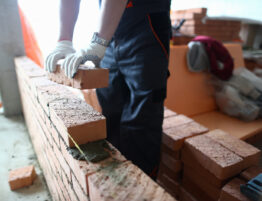
Modern flat roofing systems, when installed by professionals, are designed to require minimal upkeep. However, that doesn’t mean ‘no maintenance’ and most in the roofing business recommend a twice-yearly routine maintenance check.
So, as we face the usual influx of leaves, debris and unpredictable weather that come with Autumn, this week’s blog will guide you through some key steps to keep your roof in top shape.
Essential tips for Autumn roof maintenance
Autumn brings a palette of rich colours from the natural world, but it also throws up several potential hazards to your roof. Falling leaves, gusty winds, sudden downpours and fluctuating temperatures can lead to blockages in your gutters and drainage system or cause damage to the roof itself. Taking preventive action now can save you from bigger issues later so follow our three-step ‘clear, trim, and inspect’ plan:
1. Clear debris
Regularly clearing leaves, dirt, and debris from your roof, gutters and drains is important, but it becomes even more crucial during Autumn when these elements can accumulate rapidly.
To stay safe, consider using a leaf blower, which allows you to avoid walking directly on the roof’s surface. However, this tool might not be suitable for rooftops that have been designed as functional outdoor spaces, like gardens.
2. Trim surrounding trees
Check for any trees near your roof, especially those with branches that hang over or could do so soon. Pruning these will help reduce the amount of leaves and twigs falling onto your roof, which can clog gutters and drainage. Also, keep an eye out for creeping plants, as they can cause damage if they reach your roof.
3. Inspect for roof damage
Flat roofing requires special attention to a few specific issues:
- Blistering – This occurs when air gets trapped under the roof layers, causing bubbles that could rupture.
- Splitting – Factors like freeze-thaw cycles, stress or even poor workmanship can lead to surface cracks appearing on the roof.
- Ponding – After rainfall, check for standing water or, on dry days, for any concave areas with visible watermarks.
If you notice any of these issues, there are various solutions available—such as adding hoppers or pumps for ponding. However, for any significant repairs, it’s best to contact a professional. Not only can they tackle the job more efficiently, but they’ll also ensure proper health and safety precautions are taken.
[Note: Sheriff Construction only provides repair, leak testing and maintenance services for commercial customers who have used us for their flat roof installations.]
Extend the life of your roof
While modern flat roofs are designed to last, they still require some care to stay in good condition. A quick clean-up and inspection at least twice a year—ideally in the Autumn and Spring—can help your roof remain functional and attractive. Don’t forget to also check after extreme weather events, like heavy rain or snowfall.
Investing a little time in maintenance now can help prevent future repairs, ensuring your roof serves you well for years to come.
01.10.2024
Feature image: Pixlr AI generated








